Who can get enough zoom conversations these days?! After a long semester spent staring at/talking to my computer screen, I was feeling deprived of online meetings over the holiday break, so I dialled up UNC PhD student, intrepid BEARS Hellenistic pottery expert, and current locked-down Athenian resident Melanie Godsey for an invigorating interview about archaeology and other stuff. Like several other members of the BEARS project, Melanie came to us very highly recommended from the leadership of the Western Argolid survey (WARP), which grad student roster I shamelessly raided for talent when putting together the team. Alas, she wasn’t able to hang around Porto Rafti very much during the 2019 season due to other preexisting commitments, but she was pretty much the only person keeping me company in the Brauron museum for most of the 2020 ‘study season’ that took place this past August, when she heroically blasted through all of the historical pottery that we collected on the Koroni peninsula. Read onward to find out more about her intellectual background, fascinating research on Ptolemaic interconnections, and recent exploits in Greece, including many tantalizing autumnal photos of “the Raft”.

SCM: What got you interested in Classics/Archaeology and why you decided to pursue a PhD in the subject?
MG: I definitely got here by accident, basically because someone told me I should do Classics. I showed up on the first day of college, and I went to the history department, where they asked me what I was interested in. And I told them, and they said I was in the wrong department – I should go to Classics. So I went to Classics, and it all worked out. But I still ended up double-majoring in history, too. I couldn’t really decide if I wanted to study languages or archaeology for a while, and I was really interested in the whole discipline. But finally I decided that archaeology was what I wanted to do based on my one summer of fieldwork and some other courses. From then on I was pretty into Classical Archaeology, and I applied to grad school just to keep it going. I wasn’t sure if I’d continue beyond the MA, but I kept enjoying the work, especially the fieldwork, and got the chance to work in Greece (at WARP! A popular choice among BEARS-ers) and that sold me on sticking with this forever (hopefully).
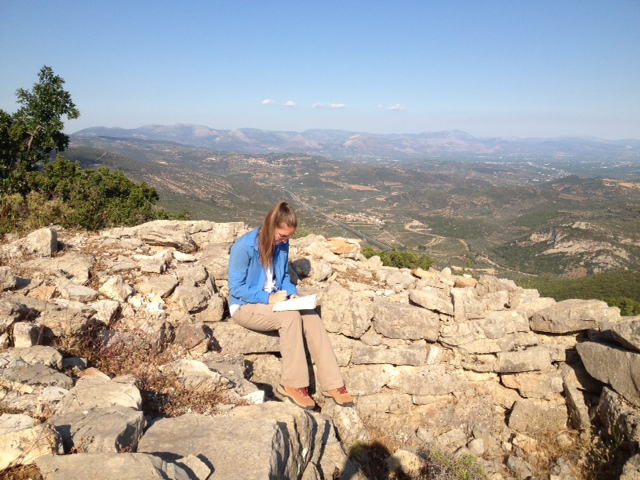
SCM: Cool! I can see why working on a fantastic project like WARP would turn a person into a lifer! So where are you currently in the program and what kinds of research are you pursuing?
MG: I am at the University of North Carolina Chapel Hill in the Classics department. I think I am in my sixth year (I think?); but who knows anymore! I am working on my dissertation now. I’m focusing on the social and economic relationships between Ptolemaic Egypt and Hellenistic Greece and how that plays out in material culture. I’m working mainly on ceramics – daily use stuff, fancy stuff, and also transport amphoras, to get a sense of how economic networks and long-term imperial goals may have changed and impacted the way that the two entities interacted: from both the Egyptian and the Greek side of things.
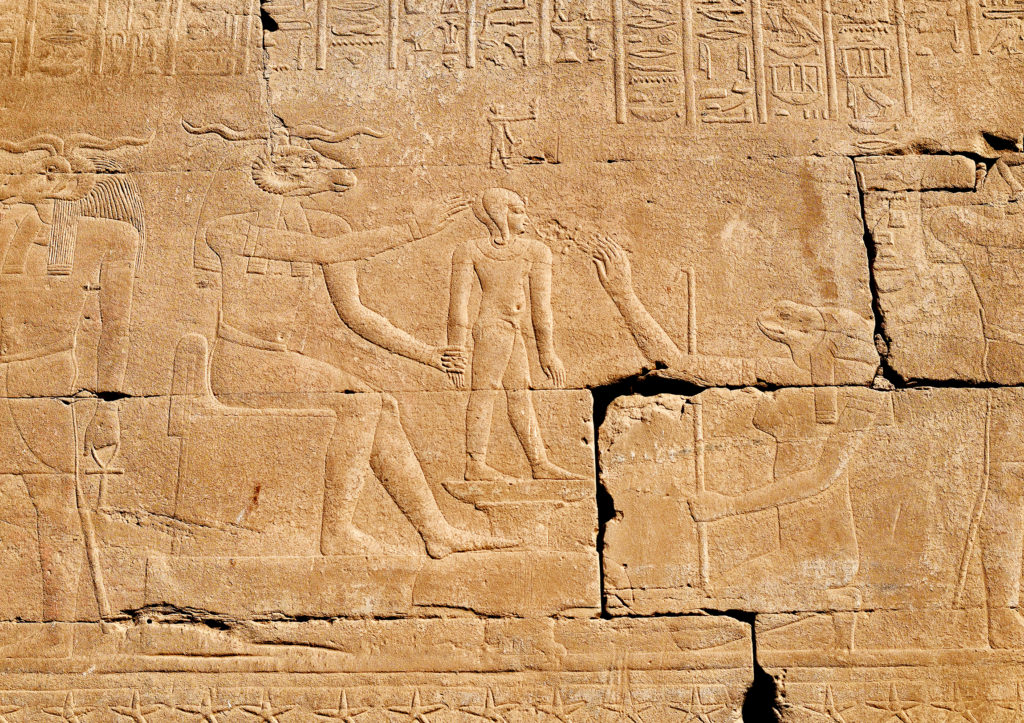
SCM: It is a really great project – Ptolemaic sites in Egypt are out of control: it is just amazing how much pottery there is at sites in Egypt and how little people seem to care about it! So, I’m guessing that there is a pretty large amount of work that remains to be done on that kind of material….
MG: Yeah, it’s very niche! There is a handful of people that work on this kind of stuff, but it’s a pretty small community. Which Ptolemaic sites have you been to?
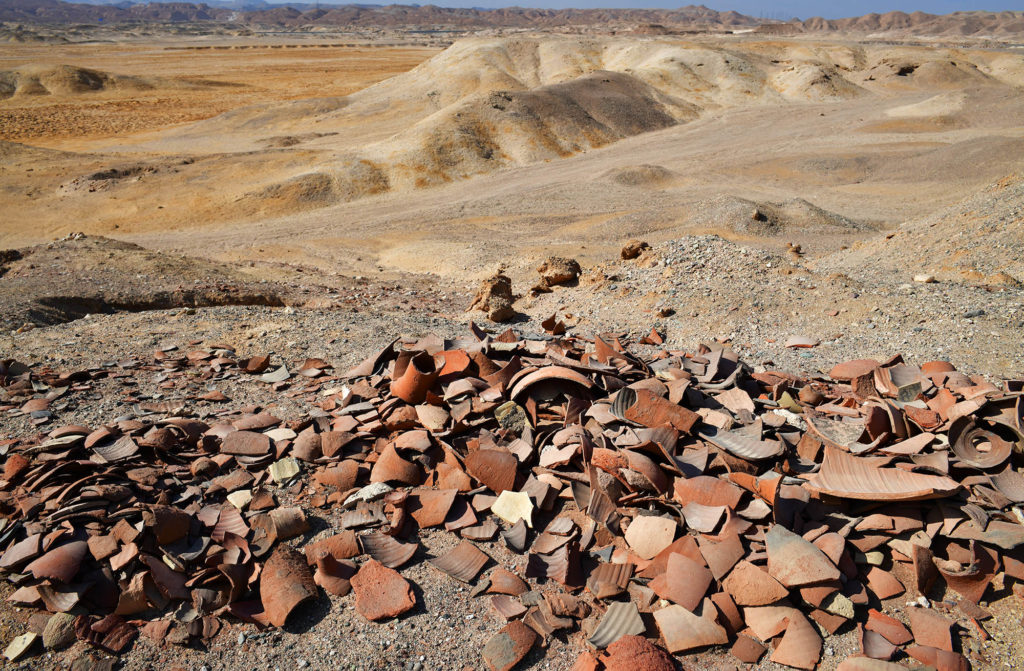
SCM: Let’s see, a lot: Dendera is one of my favorites: just a huge and crazy site with incredible preservation and fascinating reliefs, but also a bunch of other temple sites in the Nile valley. Also several places out in the deserts: Dimai north of the Fayoum, with mud-brick walls standing over 10 meters tall, some coastal and mining sites near Quseer and Wadi el-Gemal on the Red Sea, and several temples/forts in the western desert oases. The desert is crazy! For a surveyor anyway: the amount of pottery and preservation of it on the surface is one thing, but then you find all this other stuff: glass, big chunks of faience vessels, fishing nets (!), pieces of leather and cloth…..YEESH and the visibility is obviously 100%. And no thorns! As a surveyor at those sites I was kind of tweaking out a little bit. Not to mention the scale of the architecture alone.
MG: Yeah survey in the desert must be crazy! The opposite of Greece.
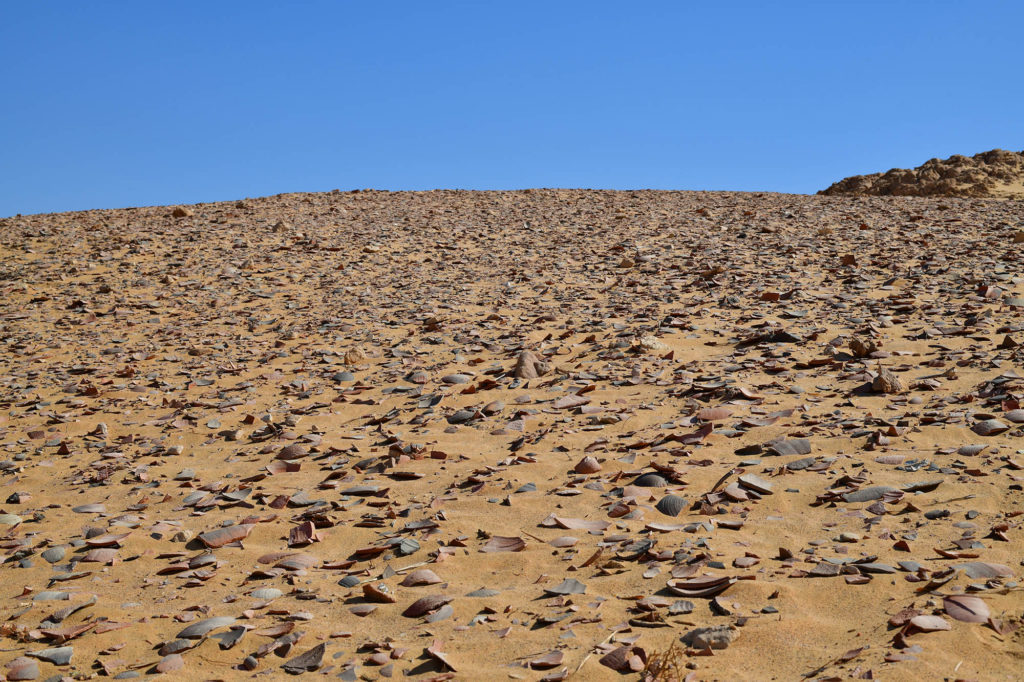
SCM: Totally. So you’re researching this super niche topic, not your average dissertation area! Can you tell us how you got into this as something to study?
MG: I knew I wanted to do something with pottery/ceramics after my first year of grad school. I was really interested in the questions that ceramics can answer about trade, about daily life, and the mundane aspects and tasks of peoples’ existence. Pottery is the most common thing that you find everywhere, so I thought that was a good avenue into lesser-studied questions. With Ptolemaic pottery, it happens that my advisor is one of the few in the U.S. who work on Ptolemaic pottery! And it’s been very interesting to see how this operates, because Egypt didn’t export a huge amount of pottery, but there is a ton of other evidence for connectivity between Egypt and the rest of the Mediterranean. People will say, oh Ptolemaic pottery I’ve never even seen that!, but that doesn’t mean that there wasn’t a ceramic result to these cross-cultural interactions. So that’s sort of how I ended up working outside of Egypt at least for my dissertation. I hope that will bring these two fields – Hellenistic Greek pottery and Egyptian Ptolemaic pottery – together a little bit.

SCM: That is really interesting; and I am sure that the results will be super useful for the field, in terms of perhaps revealing these complex relationships that haven’t been discussed so much in new ways. Having worked some on ancient trade myself, but in a prehistoric context, I am always troubled by how we rely so much on pottery in prehistory to tell us the whole story of interaction and networks. But Ptolemaic Egypt is a really compelling case, because it’s clearly really connected and cosmopolitan, but the pottery might not show you that in terms of being spread around as a trade product per se. And I guess you could think about the iconography and architecture as sort of stealthy when it comes to serving as a proxy for anything about intercultural exchange or interaction too. It will be interesting to see, methodologically, and in terms of interpretation, how the results of your study play out and what they suggest about the whole bigger issue of interpreting cultural connections and networks through archaeological remains.
MG: Yeah, absolutely, and I think in the Hellenistic period the same thing happens; people are always looking for faience or something as this concrete indicator of exchange. But maybe something more nuanced can come out of my approach which is a bit more dialectic I suppose.
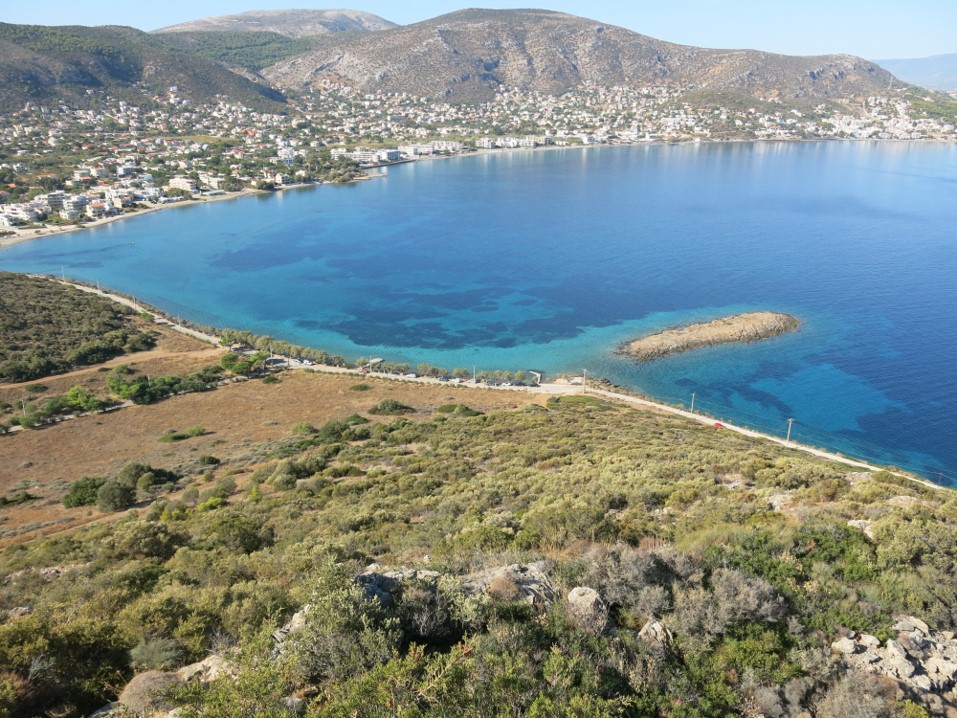
SCM: It sounds like you’re pretty deep into the whole dissertation project and obviously making good progress and getting into the trenches with that. Looking back on the earlier parts of your graduate student career, are there any particular experiences or courses that you remember fondly or that had a big impact on your intellectual development?
MG: Hmm, that’s a hard question! There were a couple of courses that really impacted the way I see and understand the field quite a bit. Two were archaeological theory courses – one taught in the Classics department and one in the anthropology department. Doing those both in the same year was really eye-opening, to think about how archaeology operates differently depending on where you work and the conscious decisions made in the data collection and data processing stages. Classical archaeology has a pretty unique approach, and there’s a lot that Classical archaeology can learn and draw from other approaches. The other class that I took was on context and assemblage theory – we talked about how all types of material culture are enacted and changing in different spaces all the time. It was really relevant to anyone who thinks about anything material across disciplines – there are so many ways to think about how we archaeologists interpret and create material assemblages. Those were definitely the most influential moments of my coursework in grad school.

SCM: Wow, those sound amazing. I can hardly remember grad school at my advanced age. But I think I had kind of a similar experience, because my undergraduate education had taught me a lot about objects and stuff, like what temples look like or whatever, but then in grad school I actually learned what archaeology really is – not just memorizing words for parts of temples, but sort of a philosophy of how to understand the world. I basically never got any of that stuff in Classics, or not until I got to grad school anyway.
MG: Definitely!

SCM: Okay, so you’ve done a ton of fieldwork – let’s hear about your range of fieldwork experiences and the kinds of work you’ve done in your career as an archaeologist so far!
MG: Sure thing! My first field school was in Italy, at an Etruscan site called Cetamura excavated by Florida State University. I really enjoyed working there, but my next project was a field survey (WARP!) with a totally different set of goals and research questions and methodology of course. It was really fun to do that so early on in my graduate career and get experience with two totally different sorts of field archaeology. Since then I’ve done a good mix of excavation, survey and (more recently) a lot of finds processing – mostly from Hellenistic sites in Egypt (French Archaeological Mission of the Eastern Desert and Abydos), Cyprus (Pyla-Vigla), and Greece (Corinth, Sikyon, WARP, among others).
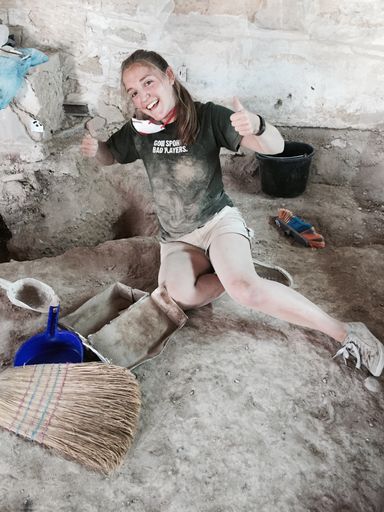
SCM: Yeah, it’s very much to your credit to be seeking out all of these different opportunities in a kind of omnivorous way. I think that’s kind of ideal for a grad student, to flit around and check out a lot of different projects to see how things are done differently in different contexts, and get a sense of the range of archaeological approaches to fieldwork. I’m sure that exposure will serve you well going forward. If you had to choose one aspect of work in the field that’s your favorite, what do you think you’d pick?
MG: Oooh, hard one! I don’t know! Despite my love for ceramics and how much time I spend with pottery, I do prefer being outdoors doing something. The range of possibility is pretty open-ended, but generally I prefer to be outside, even if it’s just at a pottery table outdoors; anything that gets a person outside and active.
SCM: I totally agree. I would always rather be outside.
MG: Especially in the Mediterranean.
SCM: Right, maybe different rules would apply in Greenland.
MG: Who knows? It sounds cold though.
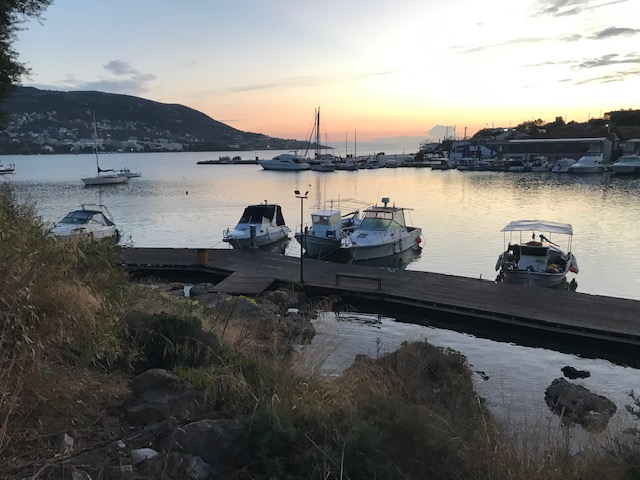
SCM: Okay, so one thing that I often think about when it comes to archaeological research in Egypt is, of course, the risk of awakening or disturbing Lovecraftian horrors of the undead, activating ancient mummy curses, and having other various terrifying/exciting adventures related to the Very Extra nature of the Egyptian archaeological record. Now working in Greece, I’ve never experienced such adventures, but I’m guessing that you must have.
MG: Actually no! I’ve not had any undead encounters or fracases with animate mummies. Do I even have any crazy stories? I think crazy things happening to me has been limited to plans for the day being totally derailed by whatever – a really nice farmer who wants to get you drunk on raki because you were walking near his field early in the morning and you hang out at his house all day and don’t get anything done; or something really exciting happens at a nearby site so you take the day off to go check that out. It’s always exciting when something cool throws a wrench in those plans and you get to experience some entirely different thing that’s happening in the world.
SCM: Oh yeah, the 9am raki drinking break! I’ve definitely been there. I generally find it hard to be very productive after a big karafaki of raki before noon.
MG: Quite a challenge, yeah!
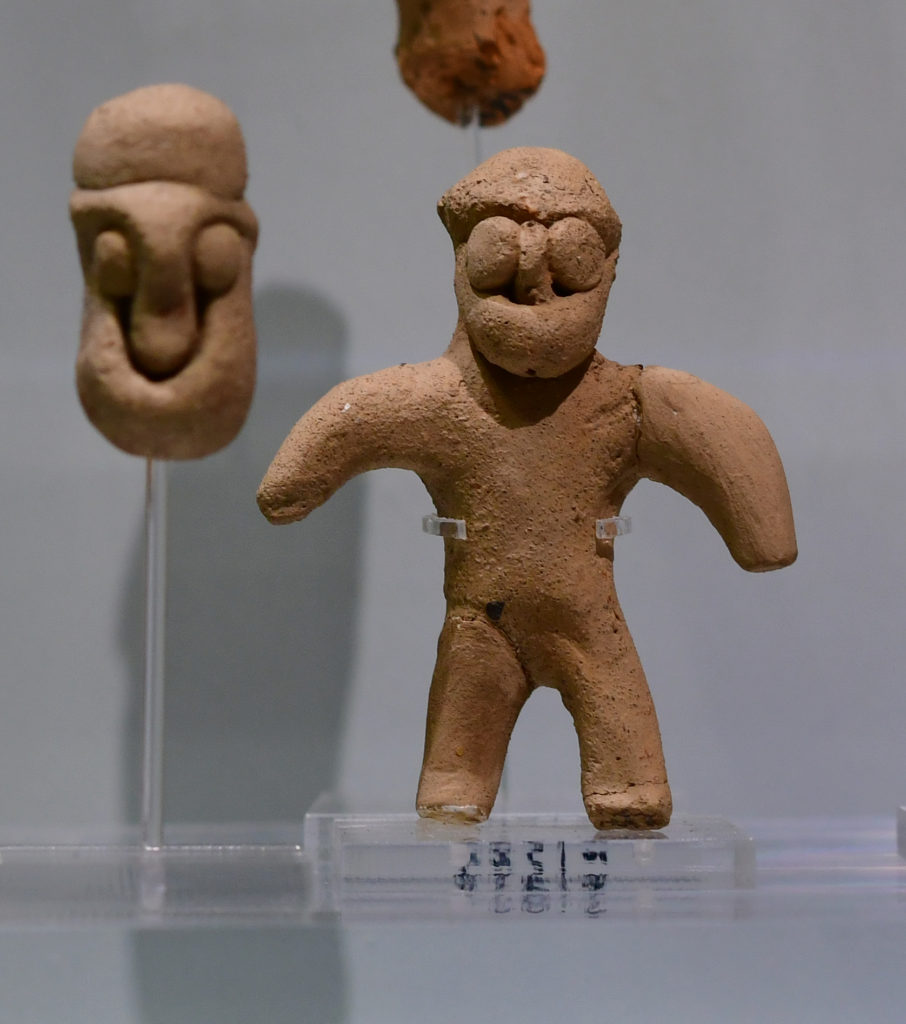
SCM: I’m also kind of heartened to hear that I’m not really missing out on a lot of encounters with the undead just because I don’t work in Egypt.
MG: Hasn’t happened to me yet – but there’s still time!
SCM: Yes, indeed, perhaps something to look forward to post-pandemic. Now, you’re currently in Greece and have been living there more or less for the last year and a half. How has that been, COVID times notwithstanding?
MG: My intention when I moved here more permanently last fall was to do the regular year program at the American School of Classical Studies in Athens, which was wonderful. We almost beat the pandemic: it just caught us at the end! Nevertheless we went to a ton of archaeological sites and talked about archaeological problems on the sites where those problems came to be known; that was definitely the most memorable experience that I’ve had; just getting to travel around in this bus and going to so many beautiful places in Greece. We were based in Athens and really got to know the city quite well and meet people living in different parts of the city and all that kind of stuff. This year I am back in Athens, but I also spent a month in October in Porto Rafti, which was wonderful! I got to know old Porto Rafti in a new way, since I hadn’t been around there too much before this year. Unfortunately, right after that we entered the lockdown again, so I’ve just been kind of working in a sedentary way for a while. But it’s been really nice; much better than a lot of places I could be right now. I feel really lucky to be here and to have gotten to spend so much time in Athens and Greece lately.
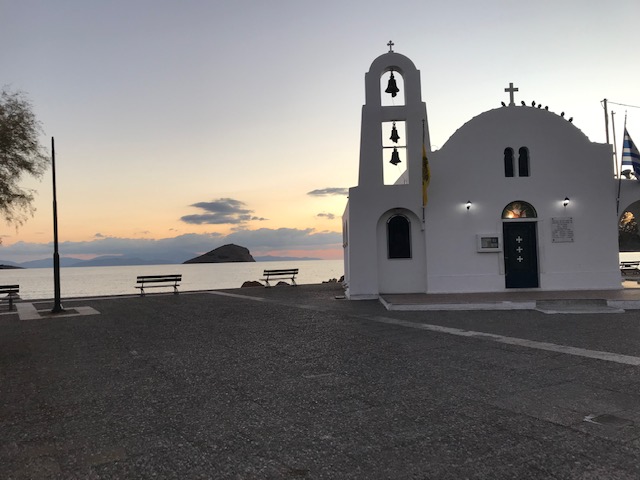
SCM: Amazing! I’m really jealous; I never lived in Greece for more than a few months at a time in grad school, which I really regret. I hope that the lockdown ends soon and that there will be some more months of fun stuff ahead!
MG: I hope so too!
SCM: But thinking back about better times in the fall, tell me about your glamorous October on the Porto Rafti Riviera.
MG: It was fun! Surprisingly it was still really crowded on the weekends all the way through October, even though there was a pandemic on! Apparently, nothing can stop Athenians from going to Porto Rafti on the weekends. But during the weeks it was pretty mellow, and you could walk around pretty easily, which is not always true, since it is not the most pedestrian friendly place. It was still possible to swim in October too! I spent a fair amount of time wandering through the area and climbing up out into the surrounding hills.
SCM: Did you discover any secret best favorite bakeries or restaurants or cafes that you’d like to share with those of us who might spend some more time in Porto Rafti in the future?
MG: I went back to Fyki Fyki, which is definitely on the favorites list. I did test out all of the different coffee options along the water, and I can report that all were very good, so you can’t go wrong with a freddo around there.

SCM: Good to know! Aside from Porto Rafti, do you have a favorite place or site in Greece, as a place to live/hang out or in terms of the archaeology?
MG: I really love the site of Messene in the Peloponnese, which is in a really beautiful location, but I also like the way that the site has been set up for visitors. You can walk most of the fortification walls, which is really cool, and the Hellenistic stuff there is really great, so it really appeals to me in terms of research as well.
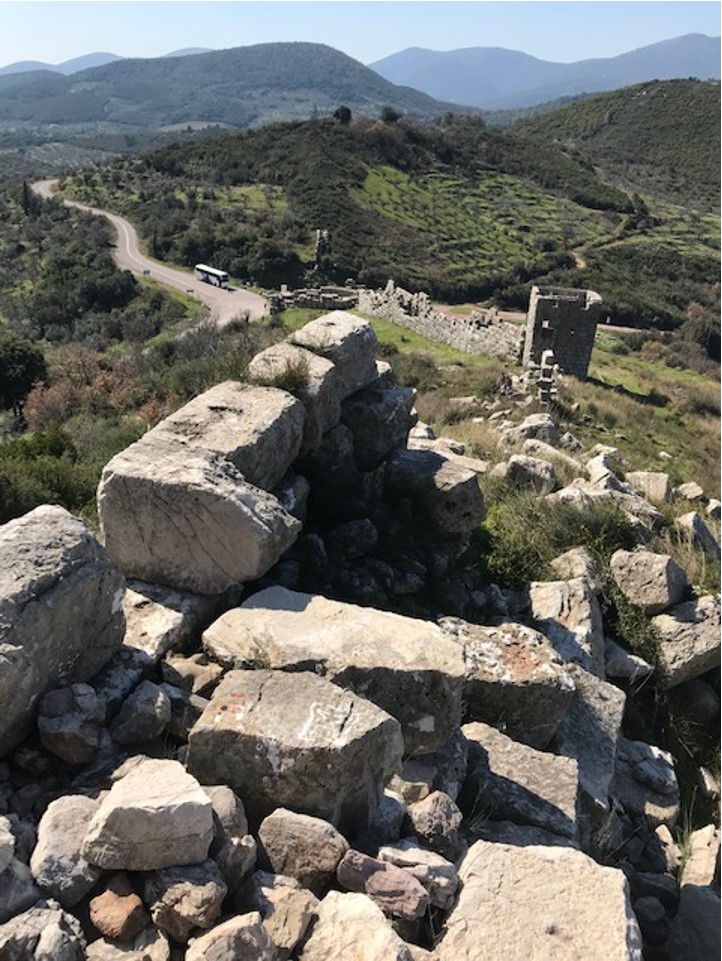
SCM: Great choice! I haven’t been there forever, but the landscape is definitely very choice in that area; in the notorious “DEEP Peloponnese” generally. And the fortifications are super cool. For now, I guess we can’t really go see any sites in Greece: do you have big plans for after the lockdown? Places you’re going to head in Greece once it’s allowed?
MG: I’m most excited to get back to fieldwork, basically of any kind. Not necessarily in terms of pursuing research questions or the thrill of discovery, but mostly for the camaraderie of the field team, which you just can’t recreate in any other context. It will be nice to get to travel beyond Kolonaki and Pangrati too! I now inhabit a very limited circle of Athens, so getting beyond that will be quite nice.
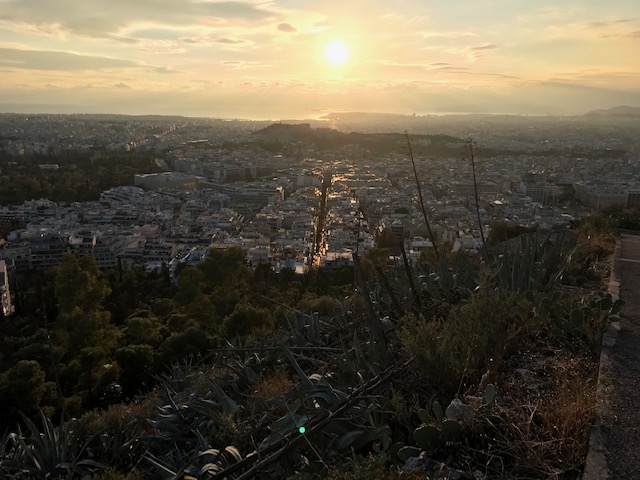
SCM: That makes sense – I am dying to have a beer with a friend somewhere, anywhere, again; the incredible camaraderie of fieldwork is kind of more than a a person can even begin to imagine after a year of hardly seeing anyone. Hopefully this summer! But who knows. For now, I’ll let you get back to wearing ruts in the sidewalks of Pangrati and Kolonaki – unless there’s anything else you’re dying to share with the BEARS blog readers!
MG: Not in particular – but I am excited for BEARS 2021 and I can’t wait to see everyone over here and meet the whole team.
SCM: Me too – I’m gonna try to do everything I can to make it happen; and now you’ll be famous, one of only three people who were a part of the extra exclusive BEARS 2020 team! Thanks for the interview and good luck with your work the rest of the winter!

